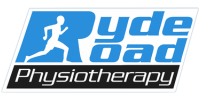Following our explanation of Endometriosis we thought to explain why women with this condition have vaginismus and/or secondary pelvic floor muscle dysfunction.
Symptoms being sexual pain, constipation, straining, difficulty with the use of a tampon and such examples can be caused by poor muscle coordination, hypertonicity, overactivity or a combination of these.
Hypertonicity is when a muscle has high resting tone due to its viscoelastic properties, each muscle is made up of single muscle fibres, then small groups of those fibres and then a larger group being the whole muscle. Around each of these is connective tissue which can be short and responds better to stretch. We use dilators to help with this or passive stretch techniques.
Overactivity is due to an involuntary pelvic floor muscle contraction and can happen as a protective mechanism. Use the neck as an example, once you have neck pain, sometimes the upper trapezius muscle can tense up/spasm in response to protect the neck. The pelvic floor does the same directly with attempted penetration due to inserting a tampon, sexual intercourse or a gynaecological examination. It can also happen indirectly with any issues happening with the bladder, bowel or uterus (through neurogenic inflammation). In the case of patients with Endometriosis, the lesions around the pelvic organs and the pain they experience can cause the pelvic floor muscles to spasm and protect the area. This happens to women over many years since menses monthly and can appear to be an issue when trying to put on a tampon or when having sexual intercourse. We can help this with therapeutic massage of the pelvic floor, downtraining of the pelvic floor and internal neuromodulation of the pelvic floor with a specialised TENS machine.
Poor muscle coordination can happens over years of altered motor patterns due to painful menstrual periods, post birth, etc. When women have an overactive pelvic floor they may have altered muscular coordination with opening their bowels. A muscle of the levators in the deeper layer of the pelvic floor called puborectalis wraps around the rectum from the pubic bone. It needs to relax when opening our bowels to allow the stool to pass, if the muscle is contracting when straining using the abdominals, this can cause the opposite and kink the rectum blocking the stool from passing. A vaginal examination can determine if this is the case and can educate the patient on how to open their bowels without causing grief. Toileting positions, exercises and dietary advice may also be appropriate to helping women with constipation and straining issues.
Physiotherapists with a special interest in Women’s Health can assist in many ways and tailor treatment for the individual with their beliefs and values taken into consideration. Contact us if you have any questions prior to an appointment and we are happy to discuss this further.
